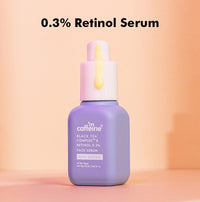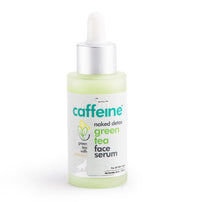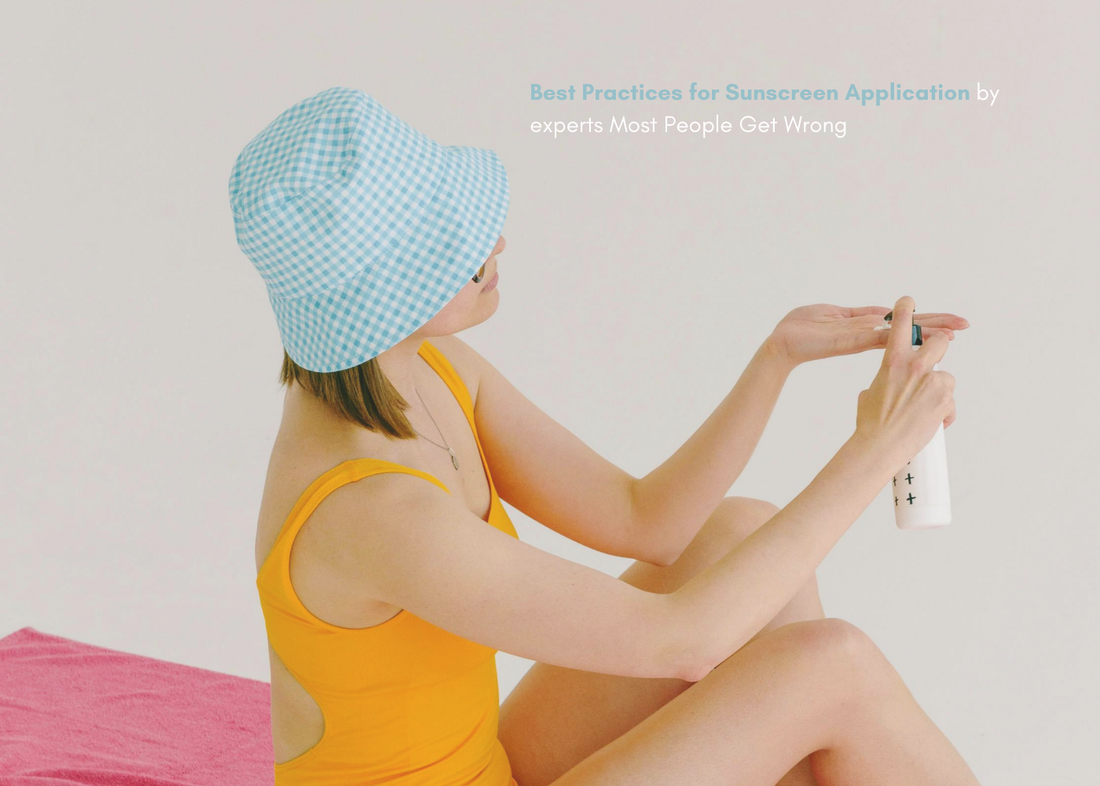Why is Sunscreen Essential?
Sun protection isn't just for beach days—it's a critical shield your skin needs daily. UVA rays penetrate deep into skin layers, causing premature aging, wrinkles, and contributing to skin cancer. UVB rays damage surface layers, resulting in sunburns and further increasing cancer risk.
Most skin aging (up to 80%) results from sun exposure rather than natural aging processes. Daily application dramatically reduces lifetime UV exposure, protecting against both immediate damage and long-term consequences.
UV radiation penetrates clouds, windows, and reflects off surfaces like water, sand, and snow. Exposure accumulates even during brief outdoor moments like commuting or running errands, making daily protection necessary regardless of weather or season.
When to Apply Sunscreen
Timing significantly impacts protection effectiveness. Many sunscreens require specific application windows for optimal protection:
Chemical sunscreens need 20-30 minutes to activate on skin before sun exposure. These absorb UV rays and convert them to heat, requiring time to bind with your skin for effective protection.
Physical/mineral sunscreens containing zinc oxide or titanium dioxide work immediately upon application by creating a reflective barrier on the skin's surface.
Morning application forms the foundation of daily defense. Apply sunscreen as the final step in your skincare routine, before makeup application. Setting an application reminder helps establish this crucial protective habit as non-negotiable in your daily regimen.
Shield your skin with mCaffeine's Coffee Sunscreen Lotion SPF 50 PA+++—formulated with antioxidant-rich caffeine for enhanced protection against environmental aggressors.
How Much Sunscreen to Use
Inadequate sunscreen quantity remains the leading cause of insufficient protection. Studies show most people apply only 25-50% of the tested amount, dramatically reducing effectiveness.
For proper coverage:
-
Face and neck: Apply a nickel-sized amount (approximately 1/4 teaspoon)
-
Full body: Use one ounce (a shot glass full) for complete coverage
Using half the recommended amount doesn't provide half the protection—it exponentially decreases effectiveness. An SPF 30 applied too thinly might deliver only SPF 5-10 protection due to the non-linear relationship between product quantity and protection level.
Areas frequently missed during application include:
-
Tops of feet and hands
-
Ears and back of neck
-
Hairline and part line
-
Lips and eye area
-
Under jawline and sides of face
-
Back of knees
Experience complete protection with mCaffeine's Green Tea Sunscreen SPF 50 PA+++—its antioxidant-rich formula helps shield against free radical damage while ensuring thorough UV protection.
Correct Application Technique for Face
Facial application requires special attention due to skin sensitivity and visibility:
-
Start with clean, dry skin after moisturizer has fully absorbed (wait 3-5 minutes)
-
Dispense a nickel-sized amount onto fingertips
-
Apply dots of sunscreen across forehead, cheeks, nose, and chin
-
Gently blend using patting motions rather than rubbing—this prevents irritation and ensures product stays on the skin surface
-
Pay extra attention to commonly missed areas like hairline, ears, sides of the face, and under the jawline
-
For eye area protection, use mineral formulations or specialized eye-area sunscreens to reduce irritation risk
-
Allow sunscreen to set for 2-3 minutes before makeup application
Many struggle with facial sunscreen feeling heavy or greasy. Modern formulations have solved these issues with lightweight textures that work perfectly under makeup without pilling or causing excessive shine.
Try mCaffeine's Sun Fix Ultra Light 1% Hyaluronic Acid Matcha Tea Sunscreen for a weightless feel that hydrates while it protects—perfect for daily use under makeup.
Body Sunscreen Application Guide
Different body areas require specific application approaches for comprehensive protection:
Arms and legs: Apply in long, even strokes, using generous amounts. Pay special attention to often-forgotten areas like backs of knees, which burn easily when exposed.
Back and hard-to-reach areas: Use spray formulations for easier application. Application tools with extended handles provide another solution for solo application to these difficult areas.
Hands and feet: The tops of hands and feet receive constant sun exposure yet are frequently overlooked. Apply sunscreen to these areas last to ensure complete coverage.
Neck and chest: These thin-skinned areas show aging quickly. Apply sunscreen in upward motions, extending protection to sides of neck and upper chest area where V-neck clothing exposes skin.
Ears and scalp: Ear tops and exposed scalp areas along part lines need protection but are often missed. Use stick formulations for precise application without mess.
For full-body protection made simple, try mCaffeine's Sun Bath SPF Body Sunscreen 80 PA+++ Spray—the spray format ensures even those hard-to-reach areas get proper coverage.
Common Application Mistakes to Avoid
Awareness of common errors significantly improves protection quality:
Using insufficient amounts: The primary reason for inadequate protection. Measure proper quantities rather than guessing to ensure labeled SPF performance.
Applying too late: Waiting until already outdoors before applying chemical sunscreen leaves skin vulnerable during initial exposure. Apply before leaving home for maximum protection.
Skipping reapplication: Even "water-resistant" formulations need reapplication after swimming, sweating, or every two hours of continuous sun exposure. Set phone reminders during outdoor activities.
Relying solely on makeup with SPF: Foundation or powder with SPF rarely gets applied thickly enough to achieve labeled protection levels. Always apply dedicated sunscreen underneath.
Missing key areas: Forgetting spots like ears, neck, hands, and feet leads to painful sunburns in these sensitive regions. Create a systematic application routine to ensure comprehensive coverage.
Applying over sweaty skin: Sunscreen adheres poorly to wet or sweaty skin. Dry completely before application for optimal adhesion and protection.
Integrating Sunscreen into Your Skincare Routine
Making sunscreen application habitual ensures consistent protection:
Morning skincare sequence:
-
Cleanser
-
Toner (if used)
-
Treatment serums and actives
-
Eye cream
-
Moisturizer
-
Sunscreen
-
Makeup (if used)
Allow each product to absorb for 30-60 seconds before applying the next for optimal effectiveness and to prevent pilling. Many skip sunscreen because it feels like "another step," but modern multifunctional formulations streamline this process.
For oily or acne-prone skin, look for oil-free, non-comedogenic formulations. Gel textures often feel lighter on these skin types while maintaining protection levels.
Experience hydration and protection in one step with mCaffeine's Kombucha Hydra Repair Sunscreen SPF 50 PA+++—infused with hyaluronic acid and ceramides to maintain skin's moisture barrier while defending against UV damage.
Choosing the Right Sunscreen
Selection criteria for optimal protection includes several key factors:
Protection level: For daily use, choose minimum SPF 30 and PA+++ rating for balanced UVA/UVB protection. Higher protection benefits those with sensitive skin or extended outdoor exposure.
Formulation type:
-
Physical/mineral sunscreens: Better for sensitive skin types, provide immediate protection
-
Chemical sunscreens: Typically feel lighter on skin, require activation time
Formula texture: Match to your skin type and climate—gel formulations work well for oily skin and humid environments, while creamier textures benefit dry skin and cooler climates.
Additional ingredients: Modern sunscreens often include antioxidants, hydrating components, or skin-soothing ingredients that provide benefits beyond UV protection.
mCaffeine Sunscreen Solutions: Product Guide
Different skin needs require specialized protection approaches. Here's how mCaffeine's innovative sunscreen lineup addresses various concerns:
For daily facial protection: Green Tea Sunscreen SPF 50 PA+++ features antioxidant-rich green tea extract that neutralizes free radicals while delivering broad-spectrum protection. The lightweight formula absorbs quickly without leaving white cast, making it perfect for all skin tones. Applied after moisturizer but before makeup, this sunscreen creates an invisible shield without disrupting makeup application.
For lightweight, hydrating protection: Sun Fix Ultra Light 1% Hyaluronic Acid Matcha Tea Sunscreen combines powerful SPF 50 PA+++ protection with intense hydration from 1% hyaluronic acid. The ultra-light formula feels weightless on skin while providing all-day moisture retention—ideal for normal to combination skin types seeking hydration without heaviness.
For full-body protection: Coffee Sunscreen Lotion SPF 50 PA+++ harnesses caffeine's antioxidant properties to enhance UV protection while fighting free radical damage. The non-sticky formula absorbs quickly, making it perfect for full-body application before outdoor activities. Regular use helps maintain even skin tone by preventing sun-induced discoloration.
For hard-to-reach areas: Sun Bath SPF Body Sunscreen 80 PA+++ Spray features a continuous spray format that ensures even application on difficult areas like the middle of the back. The high SPF 80 PA+++ protection makes it ideal for extended outdoor activities, while the quick-dry formula prevents that sticky, uncomfortable feeling often associated with body sunscreens.
For on-the-go reapplication: Hydrating Kombucha Tea Sunscreen Stick delivers SPF 60 PA+++ protection in a convenient stick format that glides over skin without disturbing makeup. Enriched with squalane, ceramides, and hyaluronic acid, this stick not only protects but actively improves skin hydration with each application—perfect for midday touch-ups without mirror access.
For intense hydration and repair: Kombucha Hydra Repair Sunscreen SPF 50 PA+++ combines barrier-strengthening ceramides with hydration-boosting hyaluronic acid to repair while it protects. This formula particularly benefits those with compromised skin barriers or dryness concerns while maintaining powerful broad-spectrum protection.
For complete sun protection routine: Coffee Cleanse & Protect SPF 50 PA+++ Routine offers a comprehensive approach to sun protection by pairing cleansing and protective steps. The system ensures skin is properly prepped for sunscreen application, maximizing both adherence and protection effectiveness.
All mCaffeine sunscreens align with the brand's commitment to 100% vegan, cruelty-free formulations without SLS, parabens, silicones, or mineral oils. The products undergo dermatological testing for safety while maintaining the brand's no-fairness-product promise.
Reapplication Guidelines
Single application doesn't provide all-day protection due to several factors:
UV exposure breaks down sunscreen: Active ingredients deteriorate after approximately 2 hours of sun exposure, gradually reducing protection.
Physical removal occurs constantly: Activities like sweating, swimming, toweling off, touching your face, or friction from clothing remove sunscreen from skin's surface.
Reapplication timing:
-
Every 2 hours during continuous sun exposure
-
Immediately after swimming or excessive sweating
-
After towel drying
-
When returning outdoors after extended indoor periods
Reapplication challenges: Many avoid reapplying because it disrupts makeup or feels inconvenient. Solutions include:
-
Powder sunscreens that brush on over makeup
-
Setting sprays with SPF protection
-
Sunscreen sticks for precise, mess-free application
-
Blotting skin first, then patting on small amounts of liquid sunscreen
Try mCaffeine's Hydrating Kombucha Tea Sunscreen Stick for convenient, mess-free reapplication throughout the day—perfect for touch-ups over makeup.
Benefits Beyond Sun Protection
Regular sunscreen application delivers multiple skin benefits beyond UV defense:
Anti-aging effects: Clinical research demonstrates daily sunscreen users show 24% less skin aging than occasional users or non-users. Regular use preserves collagen and elastin, maintaining skin's natural firmness and elasticity.
Even skin tone maintenance: UV exposure triggers or worsens hyperpigmentation issues including dark spots, melasma, and post-inflammatory marks. Consistent protection prevents these concerns from developing or intensifying.
Skin barrier preservation: UV damage compromises skin's protective barrier function. Regular protection maintains barrier integrity, improving skin's natural ability to retain moisture and resist environmental stressors.
Reduced inflammation risk: Sun exposure triggers inflammatory pathways in skin. Protection helps minimize inflammation-related concerns including redness, sensitivity, and certain skin conditions exacerbated by UV exposure.
Conclusion
Effective sunscreen application forms the foundation of both skin health and appearance. With proper application techniques, appropriate product selection, and consistent reapplication habits, sunscreen delivers comprehensive protection against both immediate damage and long-term concerns.
The few minutes invested daily in proper sunscreen application yield significant returns in future skin health and appearance. Beyond preventing sunburns, consistent protection preserves youthful appearance, maintains even skin tone, and supports overall skin resilience against environmental challenges.
Ready to upgrade your sun protection routine? Explore mCaffeine's complete range of innovative sunscreen solutions designed to provide effective protection while delivering additional skincare benefits for every skin type and concern.
FAQ
How long before going outside should I apply sunscreen?
Chemical sunscreens need 20-30 minutes to activate on skin. Mineral sunscreens containing zinc oxide or titanium dioxide work immediately upon application.
Do I need different sunscreens for face and body?
While possible to use the same product, facial skin benefits from specialized formulations designed for its unique needs—lighter textures, non-comedogenic ingredients, and additional skincare benefits.
What's the difference between SPF and PA ratings?
SPF indicates protection against UVB rays (burning rays), while PA ratings (+ to ++++) show UVA protection level (aging rays). For complete protection, choose products with both high SPF and multiple PA+ ratings.
Will sunscreen prevent vitamin D production completely?
Regular sunscreen may reduce vitamin D production somewhat. Brief sun exposure on small areas like hands or forearms, along with vitamin D-rich foods or supplements, can maintain healthy levels without risking extensive UV damage.
Can I layer makeup with SPF over sunscreen for added protection?
SPF values don't add mathematically. Your protection equals the highest SPF product applied in the proper amount. While makeup with SPF provides minimal additional protection, it should never replace dedicated sunscreen.












